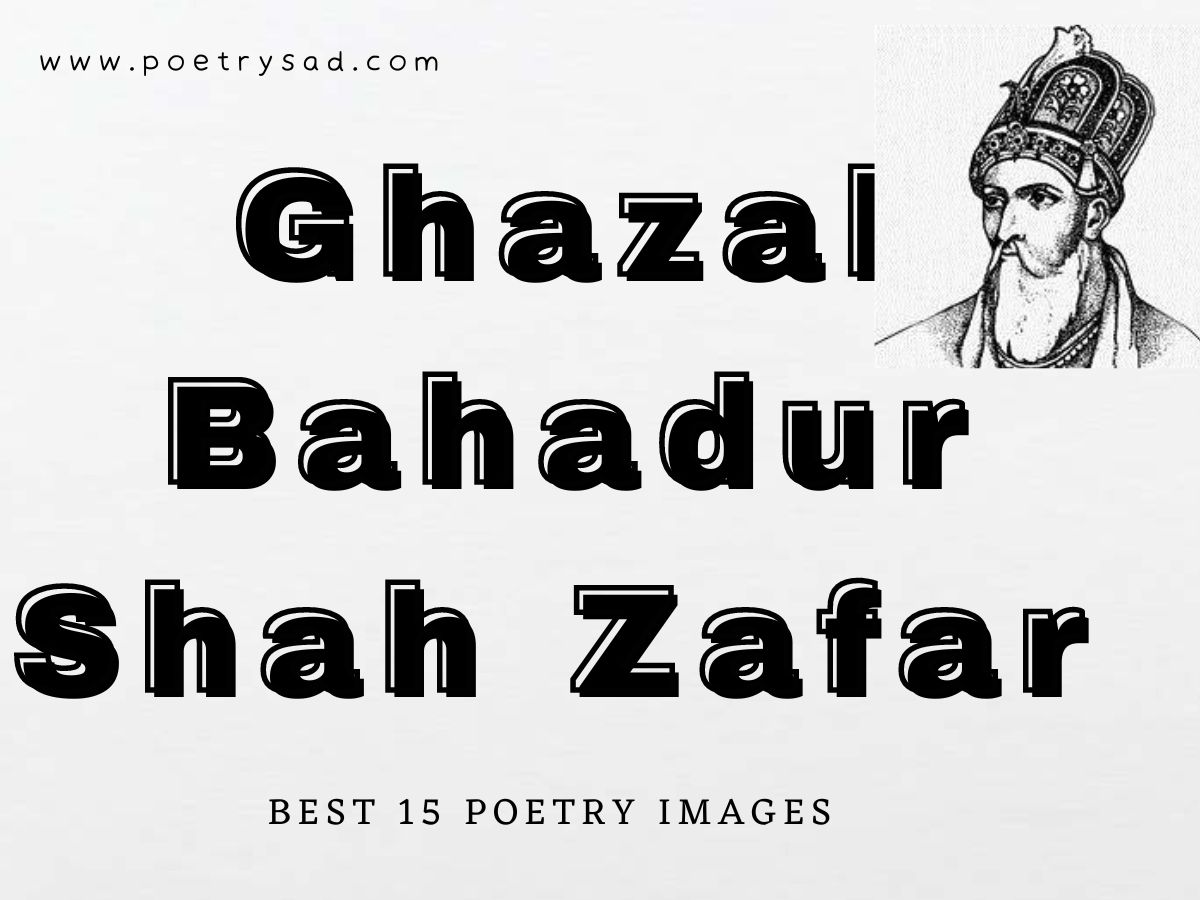The final Mughal emperor of India, Bahadur Shah Zafar Ghazal, was both a famous ruler and a brilliant poet. His ghazals, a lyrical genre that addresses subjects like love, loss, and mysticism, demonstrate his literary brilliance. In this article, we will dig into the beautiful world of Bahadur Shah Zafar’s ghazals, studying their intricacies, themes, and the enduring influence they have had on literature.

شاعروں کے دائرے میں جہاں اشعار آہستہ سے بلند ہوتے ہیں
قلم کا رقص دیکھیں، دریافت کرنے کے لیے ایک کہانی۔
بہادر شاہ، اپنے دور حکومت کا آخری،
سیاہی اور لحاف میں، اس کی میراث ہم نے برقرار رکھی ہے۔
دہلی کی رات کے چاندنی آسمان کے نیچے،
اس نے اپنے درد، ایک دردناک حالت زار کو قلم بند کیا۔
ظفر، شاعر بادشاہ، اپنے تخت پر،
الفاظ کی ایک ٹیپسٹری، اس کی اپنی سلطنت۔
مغل دربار میں گائی جانے والی غزلوں کے ذریعے
کسی شاعر کی سرگوشیاں، بادشاہ کا قلعہ۔
گلاب، اس کی شاعرانہ ٹرانس میں ایک استعارہ،
آرزو کی پنکھڑیاں، عاشق کا رقص۔
جیسے جیسے سلطنتیں ٹوٹ گئیں، اور سائے بڑھتے گئے،
ظفر کی آیات گونجی، ماضی اسے معلوم تھا۔
دہلی کے کھنڈرات میں جہاں تاریخ سوتی ہے
اس کی غزلیں ڈھلتی رہتی ہیں، ایک یاد جو رو دیتی ہے۔
اے بہادر شاہ تیری نظمیں قائم ہیں
وقت کے دل میں، ایک شاعرانہ رغبت۔
جلاوطنی میں ایک بادشاہ، شاعر کا لحاف،
ان کی غزلیں زندہ، پر سکون اور ساکت ہیں۔
غزلوں کی گونج میں، ظفر کی آواز،
محبت کا جشن، ایک لازوال انتخاب۔
Q1: Who was Bahadur Shah Zafar?
Ans: Bahadur Shah Zafar, the last Mughal Emperor of India, was born on October 24, 1775, and died on November 7, 1862. He rose to the throne in 1837 and ruled over a turbulent period in Indian history. His rule coincided with a period of British colonial expansion in India.Bahadur Shah Zafar is remembered more as a symbolic figure than a powerful king. By the time he took the throne, the British East India Company had already established major authority over India, and the Mughal Empire had become a mere formality. His power was essentially limited to the Red Fort in Delhi.
Q2: Briefly, who was Bahadur Shah Zafar?
Ans: Bahadur Shah Zafar was India’s final Mughal emperor, ruling during a time of British colonial control. His reign was symbolic, and he became a figurehead during the Indian Rebellion of 1857. Following its suppression, he was apprehended, prosecuted, and exiled to Rangoon, signaling the end of the Mughal Empire.
Q3: What were Bahadur Shah Zafar’s achievements?
Ans: Bahadur Shah Zafar reigned during a difficult period in Indian history, and he was severely limited in terms of political power. As a result, he did not make significant contributions in the traditional sense. However, some features of his tenure and legacy stand out:Bahadur Shah Zafar rose to prominence as a symbol of leadership during the Indian Rebellion of 1857. Despite his lack of genuine political power, rebels attempting to overthrow British rule chose him as their nominal leader.Cultural Patronage: Zafar was recognized for his interest in Urdu literature and culture. He was a brilliant poet who contributed to the growth of Urdu literature.
More Related Articles
The Legacy of Bahadur Shah Zafar Ghazal
In history, Bahadur Shah Zafar is remembered for more than his rule. His contribution to Urdu poetry, notably through ghazals, is unrivaled. These literary utterances provide glimpses into the spirit of a king dealing with the challenges of life, love, and the unstoppable passage of time.
The poetic essence
Each line is a sophisticated verbal ballet that combines emotions and metaphors that have stood the test of time.
Unraveling the Themes: Love and Longing by Bahadur Shah Zafar Ghazal
Zafar’s ghazals are filled with sentiments of love and longing. Whether for a loved one or a connection with the holy, these verses capture the basic human emotion of desire.
Loss and desolation
The poet’s writings also carry the anguish of loss and loneliness. Zafar expresses the sadness of separation, whether from a loved one or the throne he formerly occupied, using devastating images.
The Craftsmanship of Bahadur Shah Zafar Ghazal: Language as Art.
Zafar’s command of the Urdu language is nothing short of exceptional. His ghazals not only express emotions, but they do it with linguistic refinement, weaving a tapestry of words that captivates the reader.
Music in Rhyme
Zafar’s ghazals are even more appealing due to their rhythmic quality. When recited or sung, the verses come to life, giving the audience an immersive experience.
Enduring Influence Bahadur Shah Zafar Ghazal: Across Borders
Bahadur Shah Zafar’s ghazals have crossed geographical borders, winning lovers far beyond the Indian subcontinent. Their ageless charm continues to captivate poetry aficionados worldwide.
Inspiring Generations
Zafar’s ghazals have inspired generations of poets, helping to shape the growth of Urdu poetry. His impact on the literary scene demonstrates the enduring force of his words.
Conclusion:
Bahadur Shah Zafar In conclusion, Bahadur Shah Zafar’s ghazals are more than just poetry; they are a trip into the depths of human passion and spiritual thought. As we immerse ourselves in the rhythmic cadence of his words, we become witnesses to a legacy that transcends the limitations of time.
FAQs:
Q1: Are Bahadur Shah Zafar’s ghazals solely in Urdu?
Ans: Yes, the emperor primarily used Urdu to show his poetic talent.
Q2: How does one perceive the musicality of Zafar’s ghazals?
Ans: Attend live recitations or musical versions for a more immersive experience.
Q3: Did Zafar continue to write ghazals following his exile?
Ans: Yes, his poetic voyage persisted despite difficulty.
Q4: Is there an English translation of Zafar’s ghazals?
Ans: Several translations convey the substance of his lyrics to a global audience.
Q5: What distinguishes Zafar’s ghazals from other Urdu poets’ works?
Ans: The flawless blend of mysticism, love, and linguistic creativity distinguishes them.
